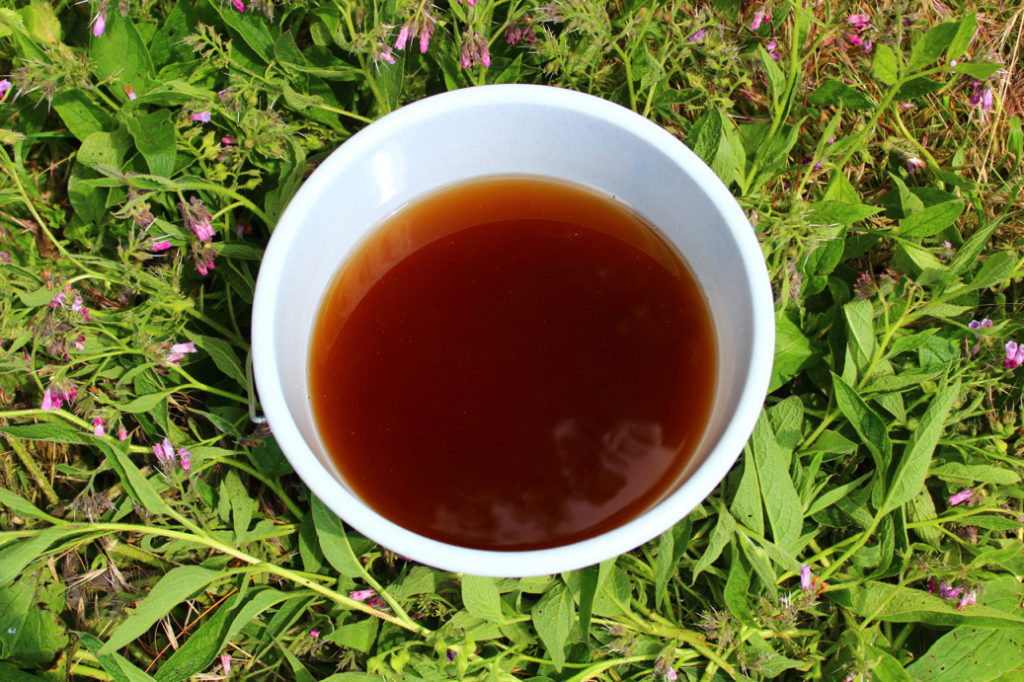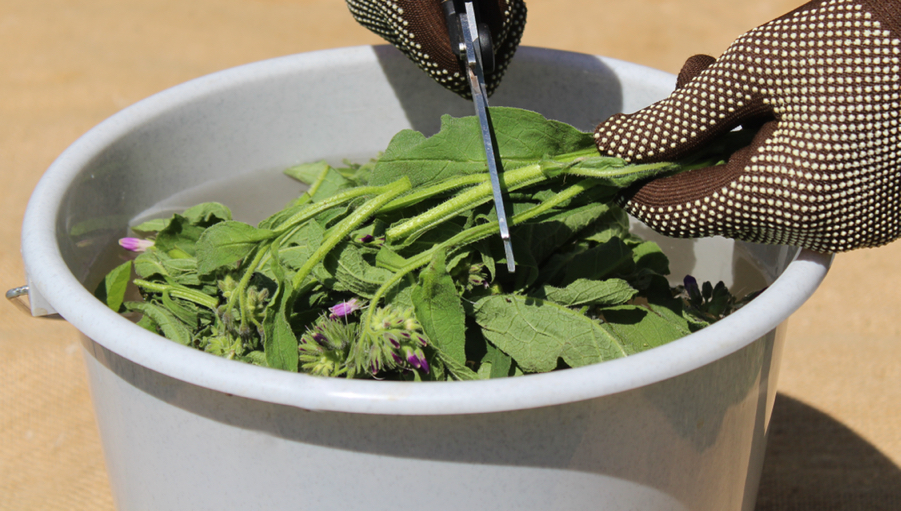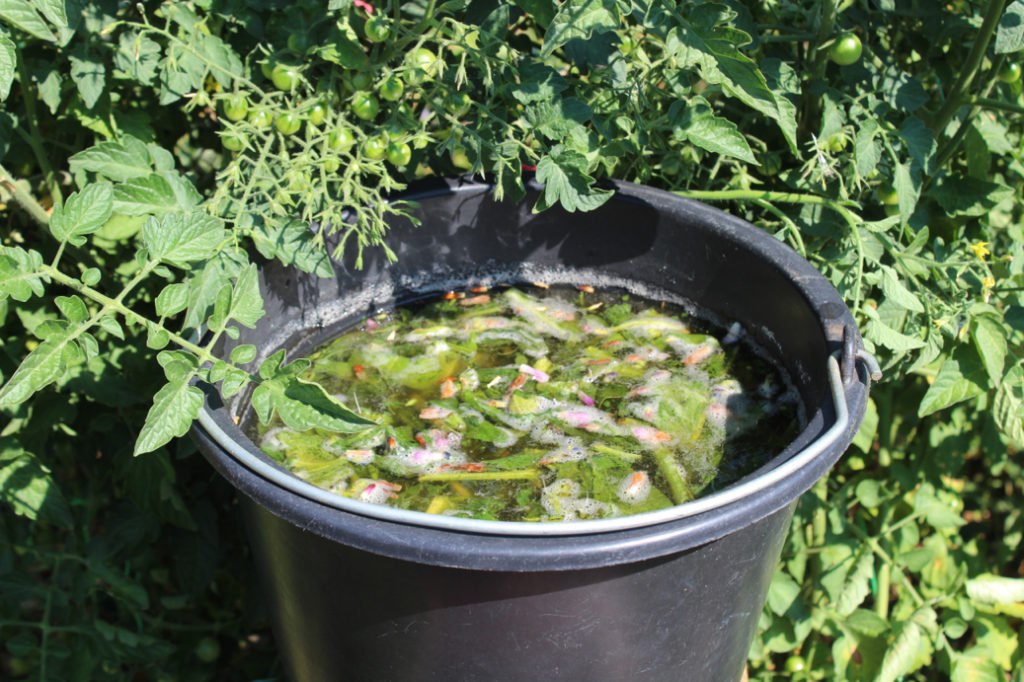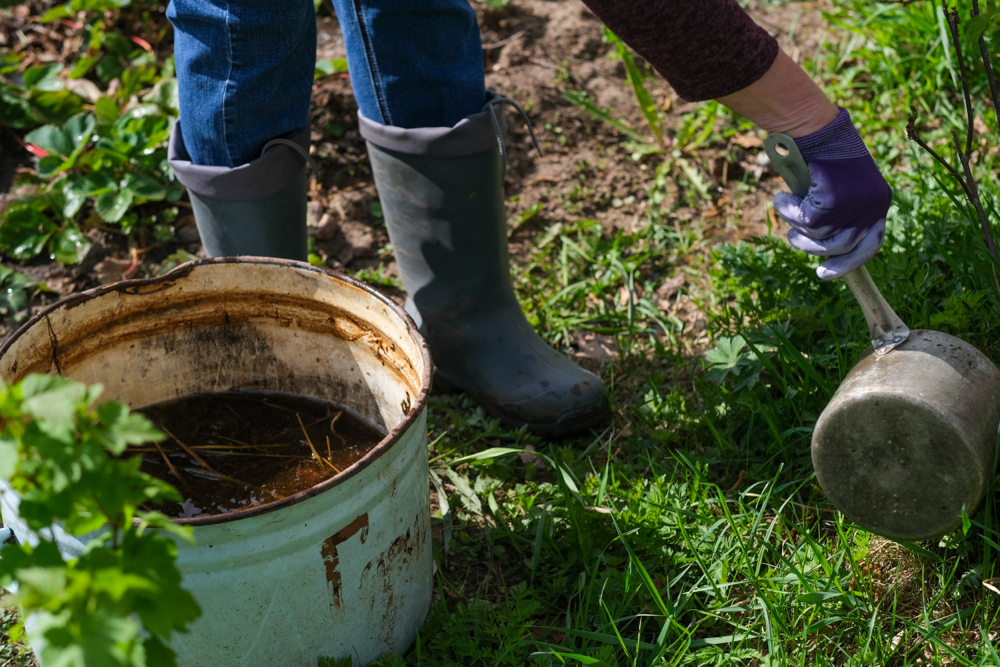Using Comfrey Feed For Tomatoes: The DIY Fertiliser That Can Help Boost Your Yield

PERENNIALS > COMFREY > TEA-FERTILISER > TOMATOES

Elizabeth is a Permaculture Garden Designer, Sustainability Consultant and Professional Writer, working as an advocate for positive change. She graduated from the University of St. Andrews with an MA in English and Philosophy and obtained a Diploma in Applied Permaculture Design from the Permaculture Association.
Reviewed By DAN ORI

Dan has over 27 years’ under his belt caring for plants and gardens. Working as a Horticultural Instructor and Consultant, he draws on a diverse range of experience that includes working as a Head Gardener, Tree Surgeon, Garden Centre Trouble Shooter, and writer of academic papers. Dan has a Level 3 Diploma in Horticulture and is currently a candidate for the RHS’s most prestigious award – The Master of Horticulture.
IN THIS GUIDE
COMFREY GUIDES
Comfrey vs Borage
Fertiliser
– For Tomatoes
Growing From Seed
Harvesting
Root Cuttings
Varieties
Comfrey is a plant commonly cultivated in organic gardens that provides many benefits, both while in active growth, and when harvested and used in various ways.
One common way in which comfrey is used is for plant fertility.
It can be very useful as a chop-and-drop material or mulch, for adding to a composting system, and for making a liquid plant feed, known as comfrey tea.
Comfrey tea is commonly used to provide a boost of nutrients for crops in a garden.

Since comfrey is a good dynamic accumulator of key plant nutrients, especially potassium, it can be especially useful for fruiting plants, like tomatoes.1Role of Potassium in Tomato Production. (2018, May 23). Yara United States. Retrieved March 14, 2023, from https://www.yara.us/crop-nutrition/tomato/role-of-potassium/
Using comfrey tea for tomatoes is a great way to improve your tomato harvest and will help to grow strong and healthy plants which deliver a high yield of fruits.
The plants require potassium in particular during the reproductive stages of their lifecycle, while they are flowering and setting fruit.
Making Comfrey Tea For Tomatoes
Comfrey can be grown in a range of settings, and is a hardy and resilient plant.
Plant it once and it will grow year after year.
Just make sure that you choose the right location for planting, as you won’t be able to get rid of it easily once it establishes itself in an area.

Once you have some comfrey growing in your garden:
- Chop up the leaves, stems and flowers into small pieces.
- Pack these tightly into a container with a lid.
- Cover the material with water, place something on top to hold the leaves down, and put the lid on your container.
- Wait for the material to break down.
- After 4-6 weeks, you will have a stinky slurry that you can dilute and use when watering your tomato plants.
Using Comfrey Tea For Tomatoes
Comfrey is particularly beneficial for tomatoes, as comfrey tea is very similar in nutrient profile to the commercial tomato fertilisers that you can buy.
Luckily, you can make it yourself for free and it is a great organic choice.
When To Use
Usually, you can harvest comfrey and make your first batch of comfrey tea in June, around the same time that you plant out your tomato plants.

You can use it to water the tomatoes as soon as it is ready, repeating every two weeks or so.
You can also make a second batch towards the end of the summer, once the comfrey has regrown, and use it to give a further boost to the tomatoes during their peak fruiting season.
Diluting Comfrey Solution
The slurry mix of rotted down comfrey will need to be diluted before it can be used on your tomato plants.
Add 1 part of this slurry mix to 10 parts water to make a comfrey tea.
Then fill a watering can 1/3 full of this comfrey tea and 2/3 full of water, and pour this around the base of the tomato plant – trying to avoid wetting the foliage, flowers or fruit.

This is a relatively weak solution but should be sufficient to give the tomato plants the boost they need to fruit well.
If the plants are showing signs of nutrient deficiency you may wish to increase the proportion of comfrey tea you use.
“When using for the first time, start with a very weak mix and check plants for any ill effects that may look like burning, as too strong a mix can do more harm than good” shares Dan Ori, a Horticultural Instructor and Consultant.
“If all is well after testing a weak mix you can creep up to 1/3 comfrey tea to 2/3 water, just keep checking the plants for burning as it can happen that mixes come out too strong.”
References
- 1Role of Potassium in Tomato Production. (2018, May 23). Yara United States. Retrieved March 14, 2023, from https://www.yara.us/crop-nutrition/tomato/role-of-potassium/
